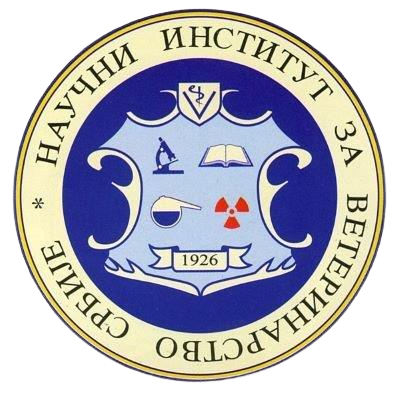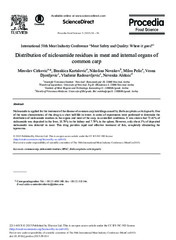Приказ основних података о документу
Distribution of niclosamide residues in meat and internal organs of common carp
| dc.creator | Ćirković, Miroslav | |
| dc.creator | Kartalović, Brankica | |
| dc.creator | Novakov, Nikolina | |
| dc.creator | Pelić, Miloš | |
| dc.creator | Đorđević, Vesna | |
| dc.creator | Radosavljević, Vladimir | |
| dc.creator | Aleksić, Nevenka | |
| dc.date.accessioned | 2023-04-19T12:04:22Z | |
| dc.date.available | 2023-04-19T12:04:22Z | |
| dc.date.issued | 2015 | |
| dc.identifier.issn | 2211-601X | |
| dc.identifier.uri | https://reponivs.nivs.rs/handle/123456789/287 | |
| dc.description.abstract | Niclosamide is applied for the treatment of the disease of common carp hatchlings caused by Bothriocephalus acheilognathi. One of the main characteristics of this drug is a short half-life in water. A series of experiments were performed to determine the distribution of niclosamide residues in the organs and meat of the carp, in controlled conditions. It was shown that 72.42% of niclosamide was deposited in the liver, 18.79% in the kidney and 7.79% in the spleen. However, only about 3% of deposited niclosamide was detected in meat. This drug provides rapid and effective treatment of fish, completely eliminating the tapeworms. | en |
| dc.publisher | Elsevier Science Bv, Amsterdam | |
| dc.rights | openAccess | |
| dc.source | 58th International Meat Industry Conference (MEATCON2015) | |
| dc.subject | niclosamide residues | en |
| dc.subject | HPLC | en |
| dc.subject | common carp | en |
| dc.subject | Bothriocephalus acheilognathi | en |
| dc.title | Distribution of niclosamide residues in meat and internal organs of common carp | en |
| dc.type | conferenceObject | |
| dc.rights.license | ARR | |
| dc.citation.epage | 56 | |
| dc.citation.other | 5: 54-56 | |
| dc.citation.spage | 54 | |
| dc.citation.volume | 5 | |
| dc.identifier.doi | 10.1016/j.profoo.2015.09.014 | |
| dc.identifier.fulltext | http://reponivs.nivs.rs/bitstream/id/149/284.pdf | |
| dc.identifier.rcub | conv_468 | |
| dc.identifier.wos | 000380429000015 | |
| dc.type.version | publishedVersion |

